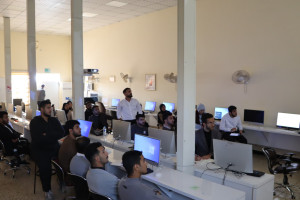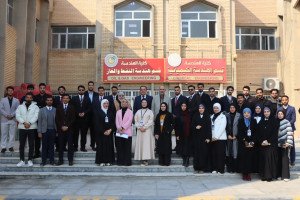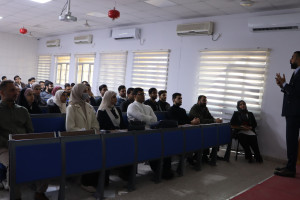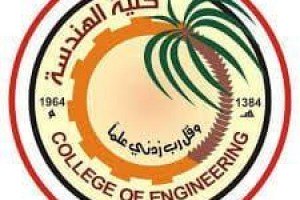a doctoral thesis at the College of Engineering at the University of Basra discussed (Experimental and Theoretical Study on Composite Reinforced Concrete Beams Curved in Plan)
The thesis presented by the student Dolfocar Ali Usamah Hashim dealt with the behavior of the horizontally curved lintel consisting of the proposed new section.
In this research the behavior of curved in plan beams made of the proposed new structural material was investigated. The effect of degree of interaction was studied. The degree of interaction is the ratio of number of stirrups passing through the web of the steel T-section divided by the total number of stirrups required by the design of the beam to resist the applied shear. This ratio was taken as 25%, 48.8%, 67.8% and 100%.
Furthermore; the experimental part also includes testing specimens subjected to pure bending and pure torsion to study the degree of interaction effect on each type of loading in addition to the combined loading state for the curved in plan beams.
It is found that the degree of interaction had small effect on the maximum load carrying capacity of the beam under bending, where the beam with 100% degree of interaction have maximum load 1.08 times that of the beam with 48.8% degree of interaction.
In specimen tested under pure torsion the degree of interaction 48.8% ultimate torque capacity is 1.14 times that of 100% degree of interaction. This may be due to the effect of using more closed stirrups in specimen with 48.8% degree of interaction.
For curved in plan specimens the 48.8% degree of interaction, represented by specimen C4, gave the maximum load carrying capacity of the group.
The study also included preparing a theoretical model using the finite element program ABAQUS.2018. The thirteen specimens tested in the experimental part of this study were investigated to verify the model.
From the theoretical analysis it was found for the group of the curved beams, that the experimental and theoretical mid span deflection at maximum load was approximately the same and the ratio of theoretical to the experimental value have maximum value of 109% and minimum value of 92% with average value of 101%.
Regarding the strength of the curved beams, the results of the finite element method were in good agreement with the experimental ones. The average value of ratio of experimental to theoretical ultimate load, for the five tested specimens was 0.99.
A parametric study using the F.E model was conducted to study effect of eight more degrees of interaction. The other investigated degrees of interaction are (14%, 18%, 27%, 35%, 65%, 74%, 82%, 86%). The parametric study includes beams under bending, torsion and curved in plan beams.
From the results of the parametric study and for the range of the tested beams, three factors were calculated namely α_F, α_T, and α_Cu which represent the ratio between the maximum load from the F.E model to the maximum load calculated using the ACI code equations for beam under bending , torsion, and curved in plan beams respectively.

.jpg)







